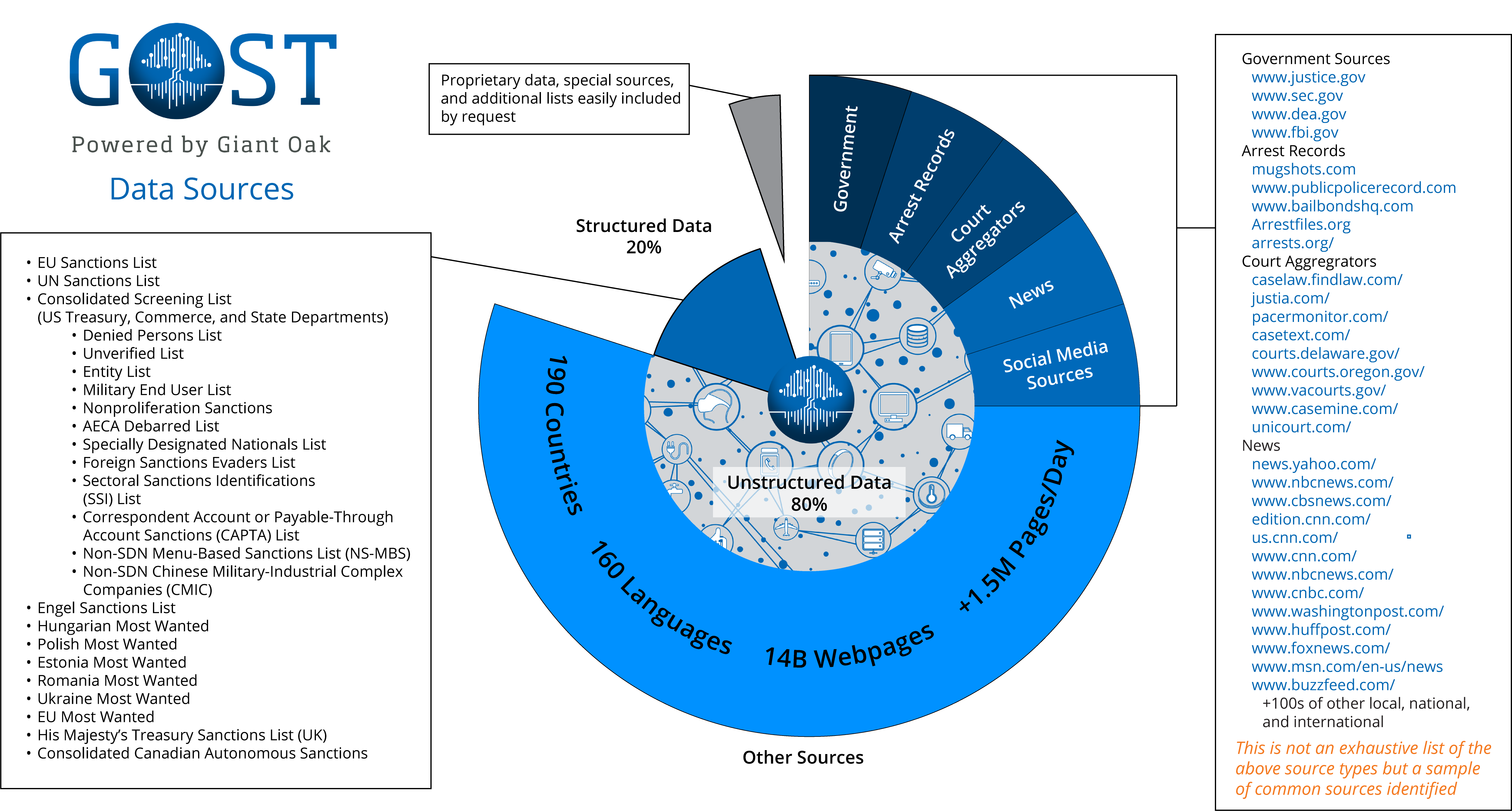What are your data sources?
by Lauralee Dhabhar, on May 25, 2023 12:24:25 PM
What are your data sources?
Traditionally, this question meant: What lists do you use? What databases do you have access to? What news sources do you subscribe to?
But in today's data-driven world, industries across the spectrum are increasingly using data analytics to improve efficiency, accuracy, customer experiences, and more. The traditional sources of data (structured) are not enough. We are generating more data than ever before. An estimated 120 zettabytes will be generated in 2023 (that’s 120 x 1021 bytes!), and over 80 percent of it will be in unstructured formats. While both types of data possess unique characteristics and implications for businesses and organizations, understanding the differences between them is crucial for harnessing their potential and making informed decisions.
120,000,000,000,000,000,000,000
Structured Data:
Structured data refers to information organized and stored in a predefined format, often found in traditional databases. Its nature allows for easy sorting, querying, and analysis. Structured data is typically characterized by a fixed schema, meaning the data is arranged into rows and columns, adhering to a specific data model.
Advantages of Structured Data:
Easy Analysis: The predefined structure of structured data enables straightforward analysis and reporting. Data scientists and analysts can use SQL queries or other structured query languages to extract valuable insights efficiently.
Efficient Storage: Due to its organized nature, structured data is generally compact, requiring less storage space. This efficiency makes it cost-effective for businesses to store and manage large volumes of structured data.
Disadvantages of Structured Data:
Limited Flexibility: Structured data relies on a rigid schema, making it challenging to accommodate new data elements or adapt to changing requirements. Any modifications to the data structure may entail significant time and effort.
Incomplete Insights: While structured data provides valuable insights into well-defined questions, it may fall short of offering a holistic view of complex and unanticipated scenarios. It may not capture nuanced information or unstructured elements that could be crucial for decision-making.
Unstructured Data:
Unstructured data, on the other hand, lacks a predefined structure and does not conform to a fixed data model. It encompasses a vast array of information types, including text documents, emails, images, audio files, social media posts, and more. Unstructured data is typically generated at a rapid pace and can be challenging to organize and analyze without specific techniques. However, unstructured data makes up between 80 and 90 percent of all available data, making it a critical analytics resource.
Advantages of Unstructured Data:
Rich and Diverse Information: Unstructured data contains vast amounts of valuable information that may not be available in structured data sources. It offers deeper insights into customer sentiments, opinions, and preferences.
Real-Time and Timely Insights: Unstructured data often captures real-time information, providing organizations with up-to-date insights and trends.
Innovation and Competitive Advantage: Extracting value from unstructured data can lead to innovation and provide a competitive edge. By uncovering hidden patterns, relationships, and trends, businesses can gain a deeper understanding of customer behavior.
Disadvantages of Unstructured Data:
Complexity in Analysis: Unstructured data poses challenges in terms of organizing, analyzing, and extracting meaningful information. Advanced techniques, such as machine learning algorithms, text mining, and image recognition, are necessary to derive insights effectively, requiring expertise and computational resources.
So, how can you get the most out of 80+ percent of the available data trapped in an unstructured format?

AI systems like GOST enable AML/BSA, 3rd-party risk, and law enforcement experts to access, use, prioritize, and contextualize unstructured data specific to their priorities. By employing transformer-driven large language models, GOST can READ the internet. It is not just returning webpages and information based upon keywords or basic identifiers. This form of sophisticated technology understands the context behind what it reads, can determine the value and relevancy of the information, and combine this data with traditional structured data analysis to allow its users to get the most from 100% of the data instead of just the 20% they have become accustomed to having available. This task would require if performed manually, an impossible number of manhours at a huge expense. Today's advanced technologies, like GOST, turn the previously impossible into an easily accessible, precise, and cost-efficient reality.
Ultimately, the more data you have available, the better the decisions you will be able to make, provided you employ systems able to UNDERSTAND both formats and return only the most relevant and accurate information. Keeping up with the zettabytes means keeping up with risk management.



